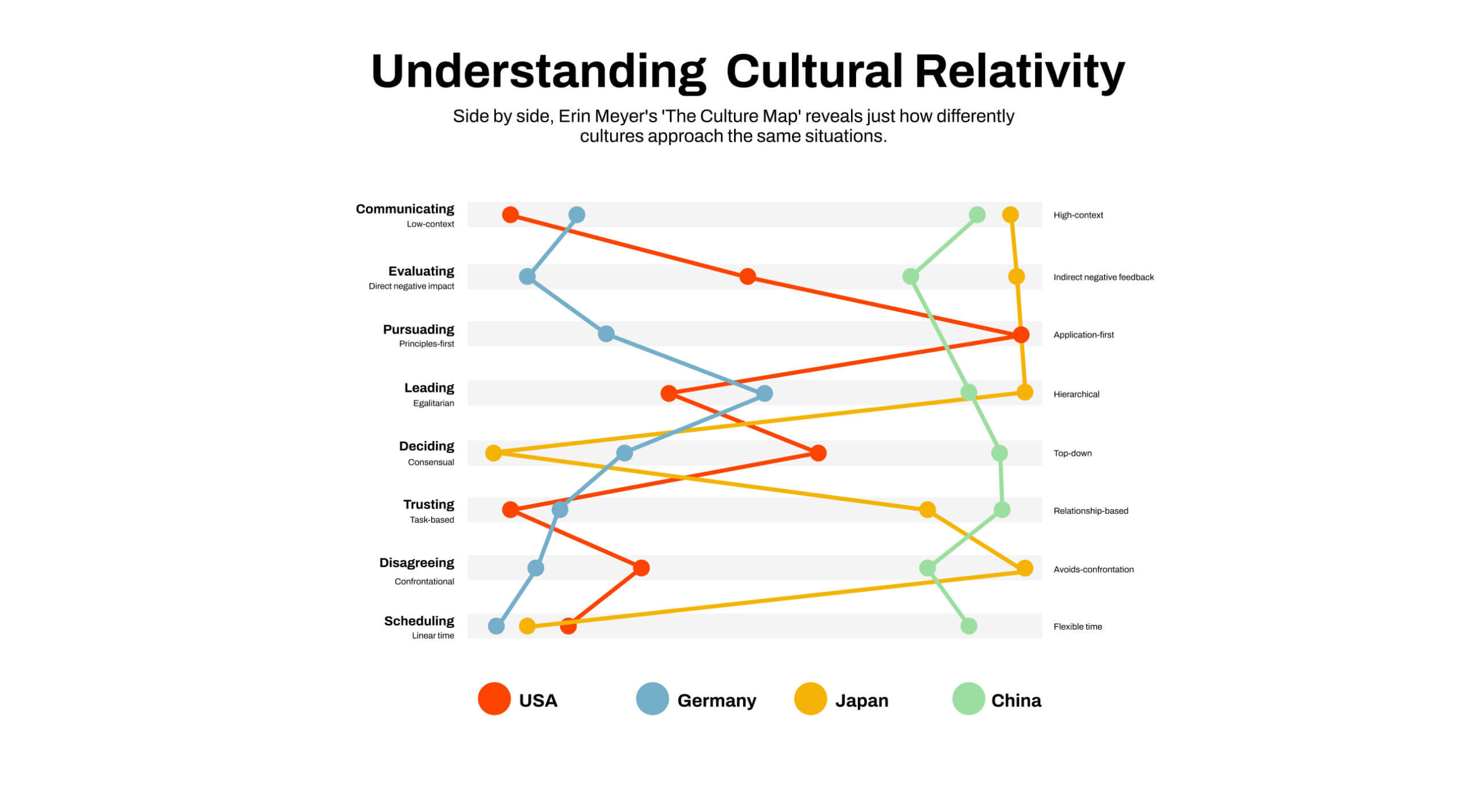Tariffs have forced a reckoning.
As protectionist policies rise and trade routes tighten, companies worldwide are scrambling to rethink their strategies. The old playbook—dominate your home market, then replicate the formula internationally—has started to fall apart. Business leaders everywhere are learning the same hard lesson: if you want to survive in this new environment, you can’t treat every market the same.
Trade barriers have accelerated the need to diversify. But diversification isn’t just about opening new offices or shifting supply chains. It requires something far more difficult—earning trust in markets that speak different cultural languages.
Too often, this is where brands stumble. They underestimate the complexity of building credibility in unfamiliar regions, assuming a one-size-fits-all strategy will scale. It doesn’t.
At Takt, we’ve seen this mistake firsthand. It’s why we developed ON.BEAT—a framework built on the principles of bravery, empathy, adaptability, and thoughtfulness. It helps brands navigate the space between global alignment and local resonance. But we didn’t invent this from thin air. We’ve drawn heavily from cultural thought leaders like Erin Meyer, whose Culture Map has become essential reading for leaders building global businesses. And for anyone serious about understanding cultural dimensions, Hofstede’s foundational work still offers sharp, if academic, insights into why trust feels so different across borders.
The takeaway? If your strategy treats culture as an afterthought, you’re already behind.
When brands stretch too far, and too thin
It’s easy to fall into the trap of believing global consistency equals strength. But what feels coherent at headquarters can easily land as tone-deaf elsewhere.
Consider universities that have long relied on international student enrollment. Post-pandemic shifts in immigration policy and growing competition mean Chinese and South Asian students—the very audiences they once counted on—are looking elsewhere. Institutions still clinging to pre-2020 messaging are watching applications decline, failing to address new realities: visa uncertainty, shifting family expectations, and the increasing importance of local community narratives.
Or look at a fast-scaling SaaS company that positioned itself as a disruptive force, eager to win government contracts. The messaging? Bold, fast, innovative. The reality? Procurement teams, tasked with minimising risk, saw them as unstable. They wanted assurances of compliance and long-term security—not startup bravado.
A property developer expanding into a city with a strong Chinese diaspora made a similar misstep. They led with growth projections and investment returns but skipped over the deeper values that matter locally: community impact, family ownership, sustainability. Without these, they struggled to gain traction.
None of these are branding failures in the aesthetic sense. They’re failures of alignment. Failures to recognize that what builds trust in one market can quietly erode it in another.
Understanding trust, market by market
Trust is contextual. Erin Meyer’s Culture Map unpacks this with clarity, highlighting how trust is built either cognitively or affectively, depending on the culture. In the U.S., trust is often forged through business performance—get results, and relationships follow. In many Asian markets, it’s the reverse: relationships and credibility open the door to business.
Erin Meyer’s ‘The Culture Map’ offers a clear view of how cultural approaches diverge across key dimensions.
Add in Hofstede’s insights—dimensions like uncertainty avoidance, individualism vs collectivism, and power distance—and the complexity multiplies. Markets with high uncertainty avoidance (like Japan) demand detail, precision, and security. Meanwhile, markets with high collectivism (like China) prioritise group harmony and trusted networks over individual achievements.
These aren’t academic curiosities. They shape how people perceive your brand, your promises, and your place in their market.
For a quick visual snapshot, tools like Culture Catch provide accessible frameworks for understanding these cultural dynamics at a glance. While simplified, they’re useful starting points for teams beginning to map cultural differences into their go-to-market strategies.
Building brands that flex without breaking
So how do you apply this practically?
First, start with real audience insights—qualitative, not just demographic. Understand how decision-makers in each market think, feel, and build trust. In diaspora communities, for example, trust often flows through personal networks, community leaders, and shared values, not corporate advertising.
Second, create a flexible brand architecture. Instead of locking every region into the same system, build adaptable frameworks that allow for variations in tone, voice, and value proposition. Think global principles, local execution.
Third, invest in digital-first localization. Don’t just translate language—translate experience. Local UX patterns, culturally relevant visuals, and platform integrations matter deeply. For example, in Chinese markets, integrating WeChat and prioritising mobile-first design isn’t optional. It’s expected.
Finally, test and iterate relentlessly. What works in North America might fall flat in Southeast Asia. Build feedback loops, run A/B tests, and adapt based on real engagement.
The brands that adapt win
Organizations that embrace this approach build trust faster. They sidestep the pitfalls of generic messaging and create relevance where it matters most.
But let’s be clear: this isn’t about diluting your brand. It’s about building a system strong enough to flex without breaking. The most successful global brands aren’t the ones that shout the same message everywhere—they’re the ones that listen, learn, and adapt with precision.
In a world reshaped by tariffs, fragmented supply chains, and regional economic shifts, adaptability isn’t just smart strategy. It’s survival.
Brands across borders win not by scaling their message, but by scaling their empathy.







